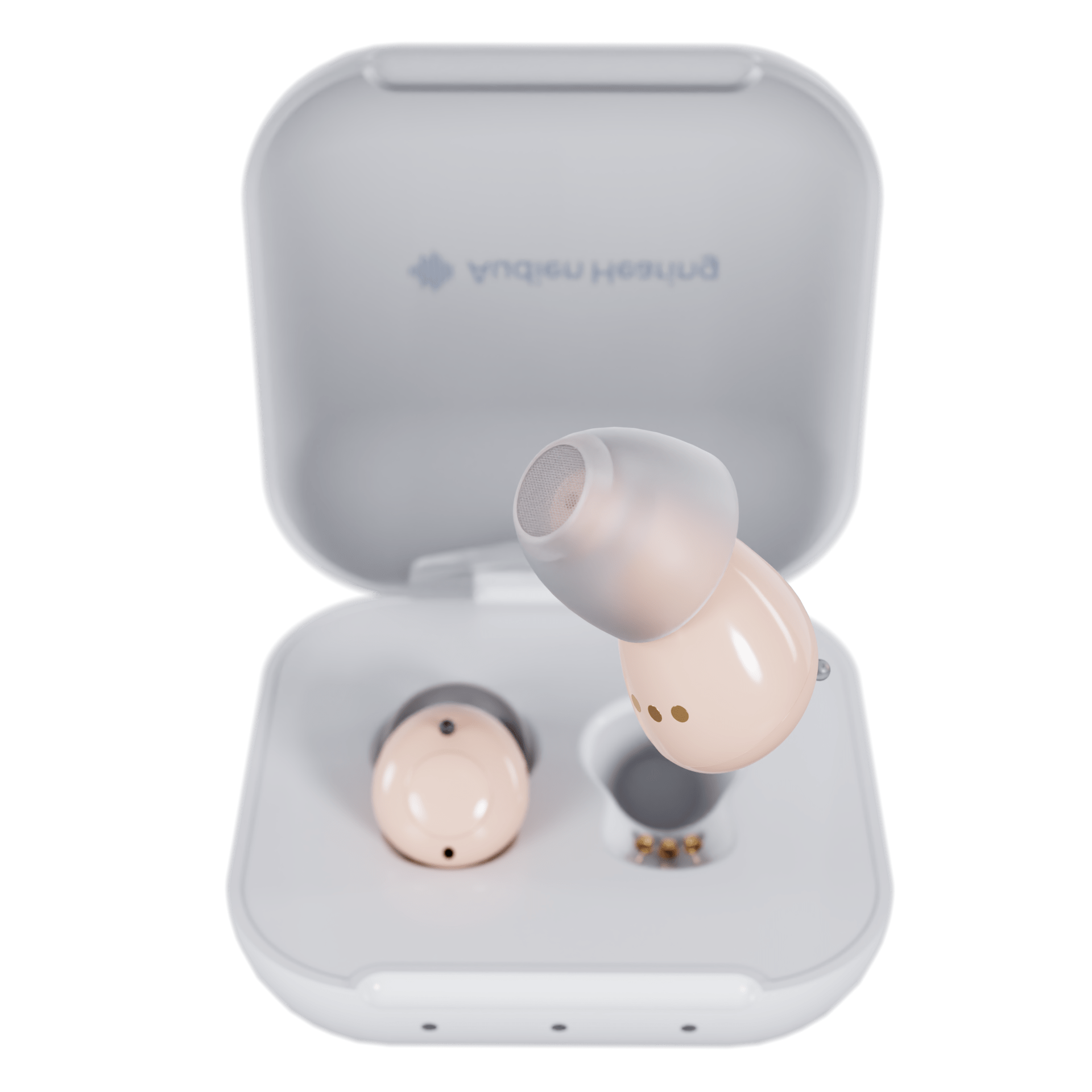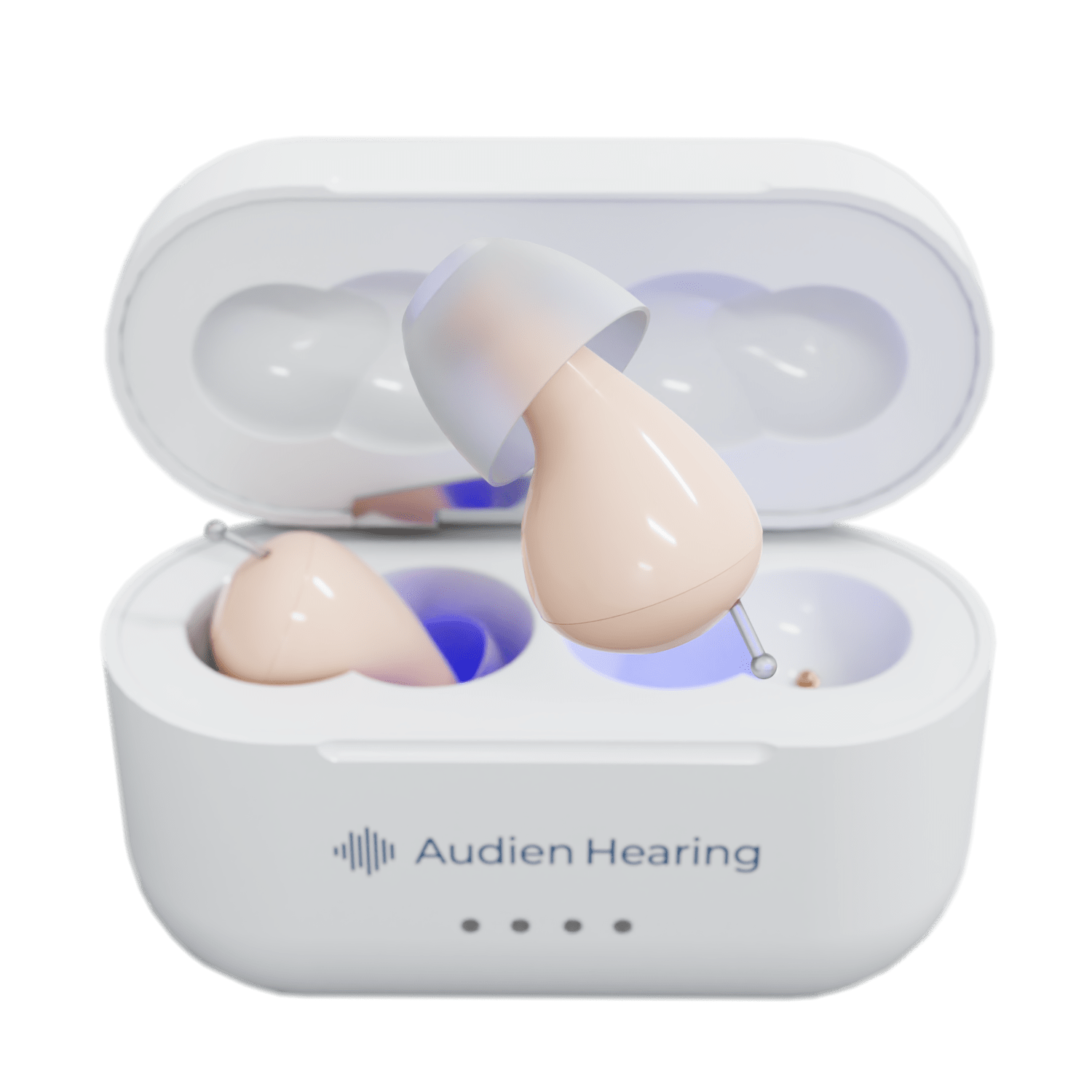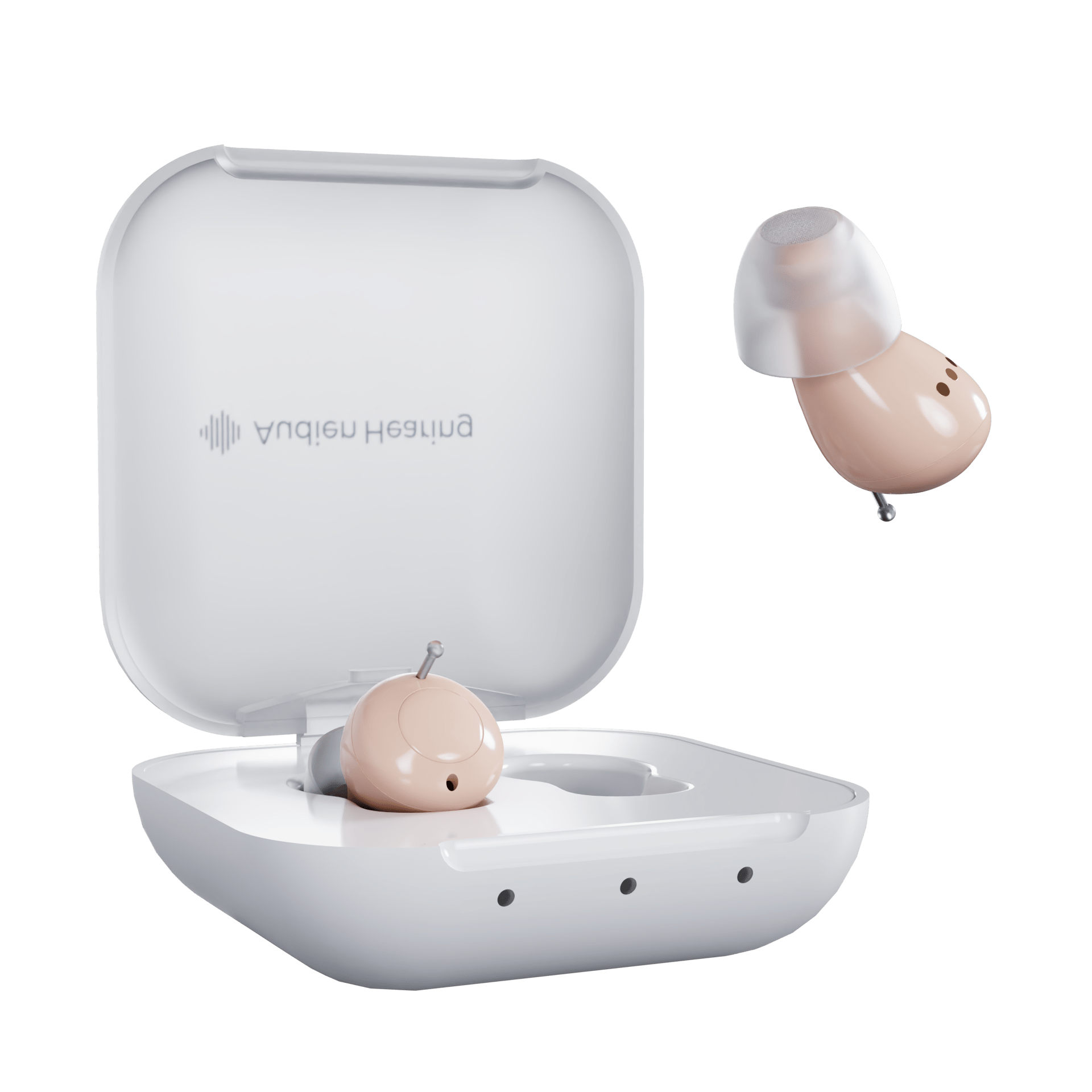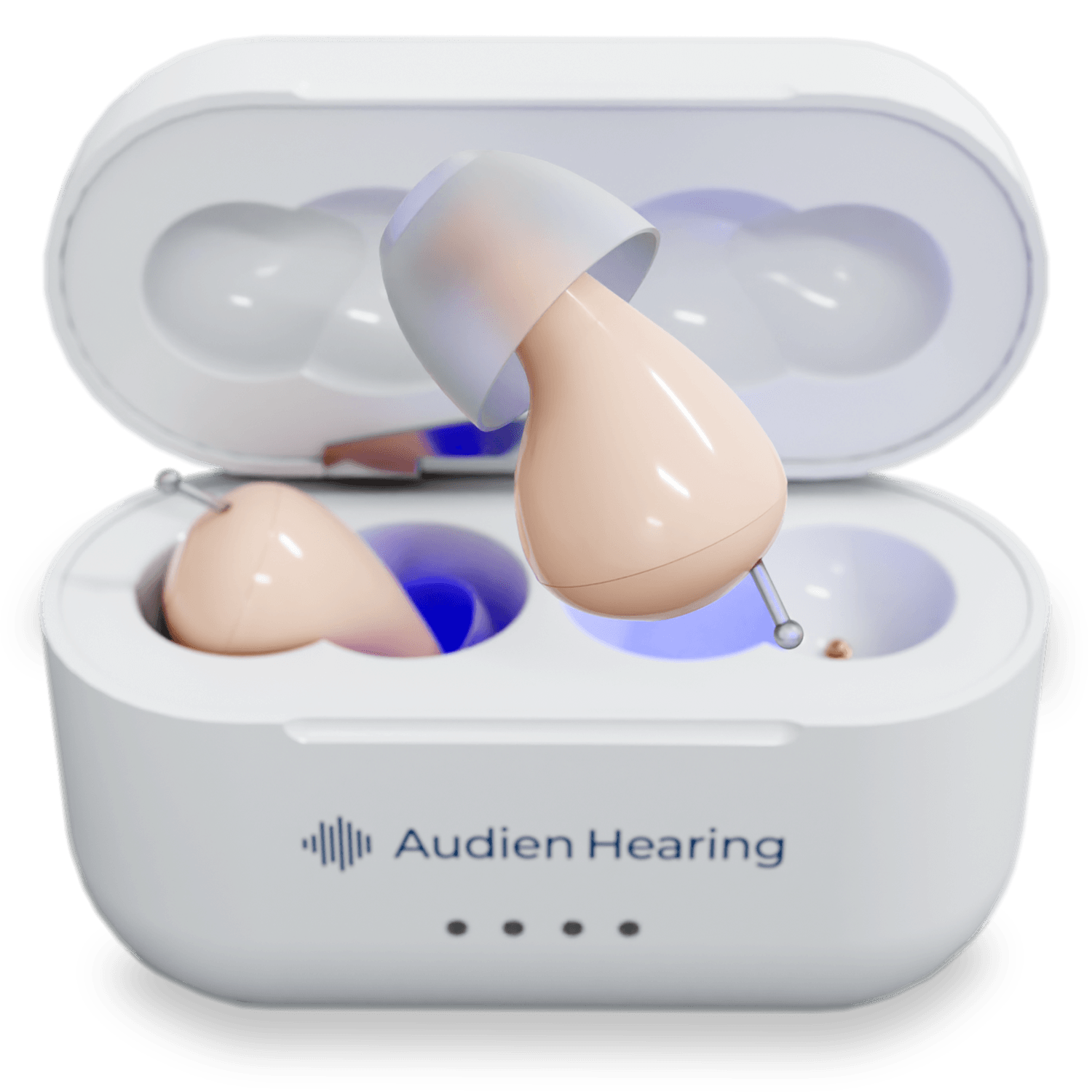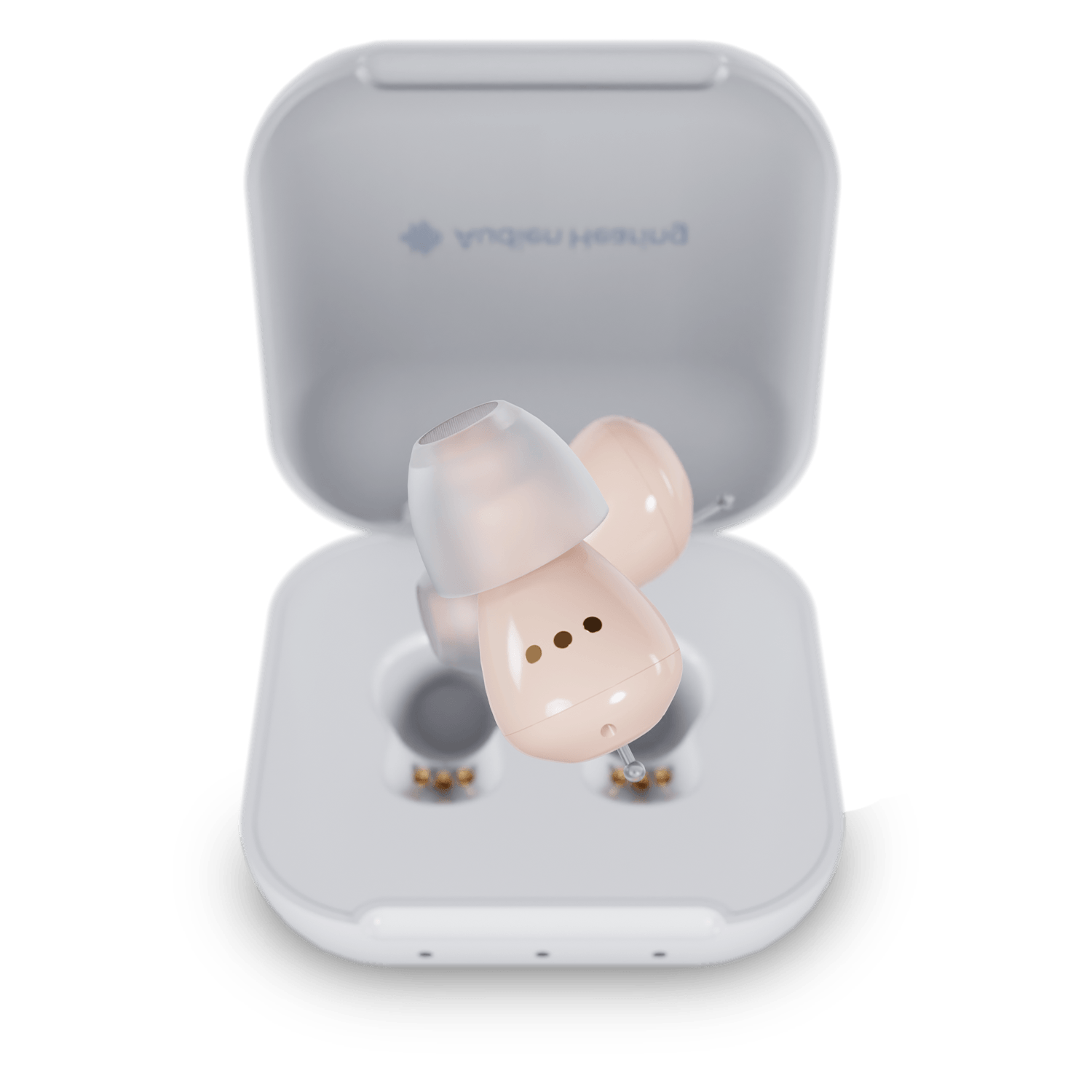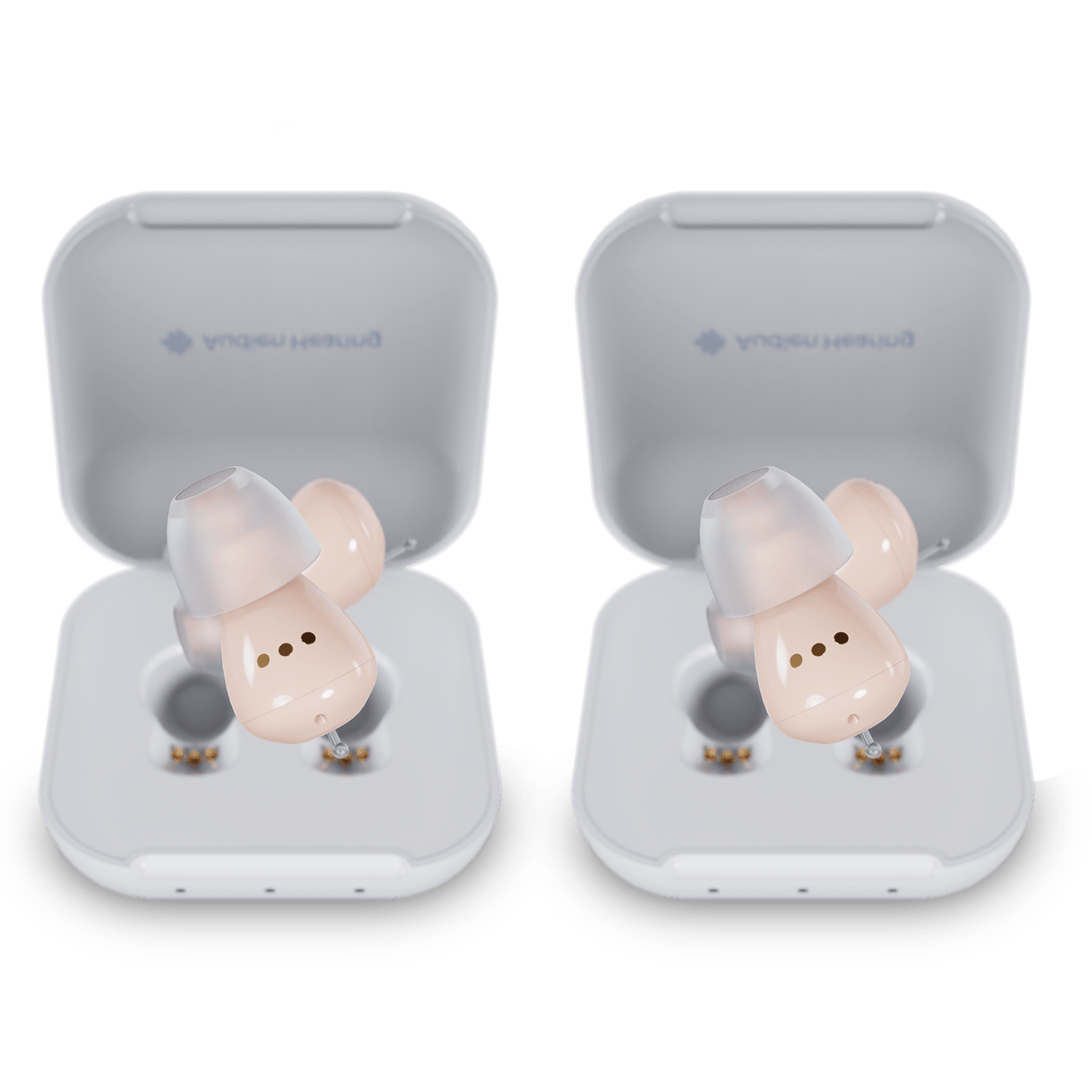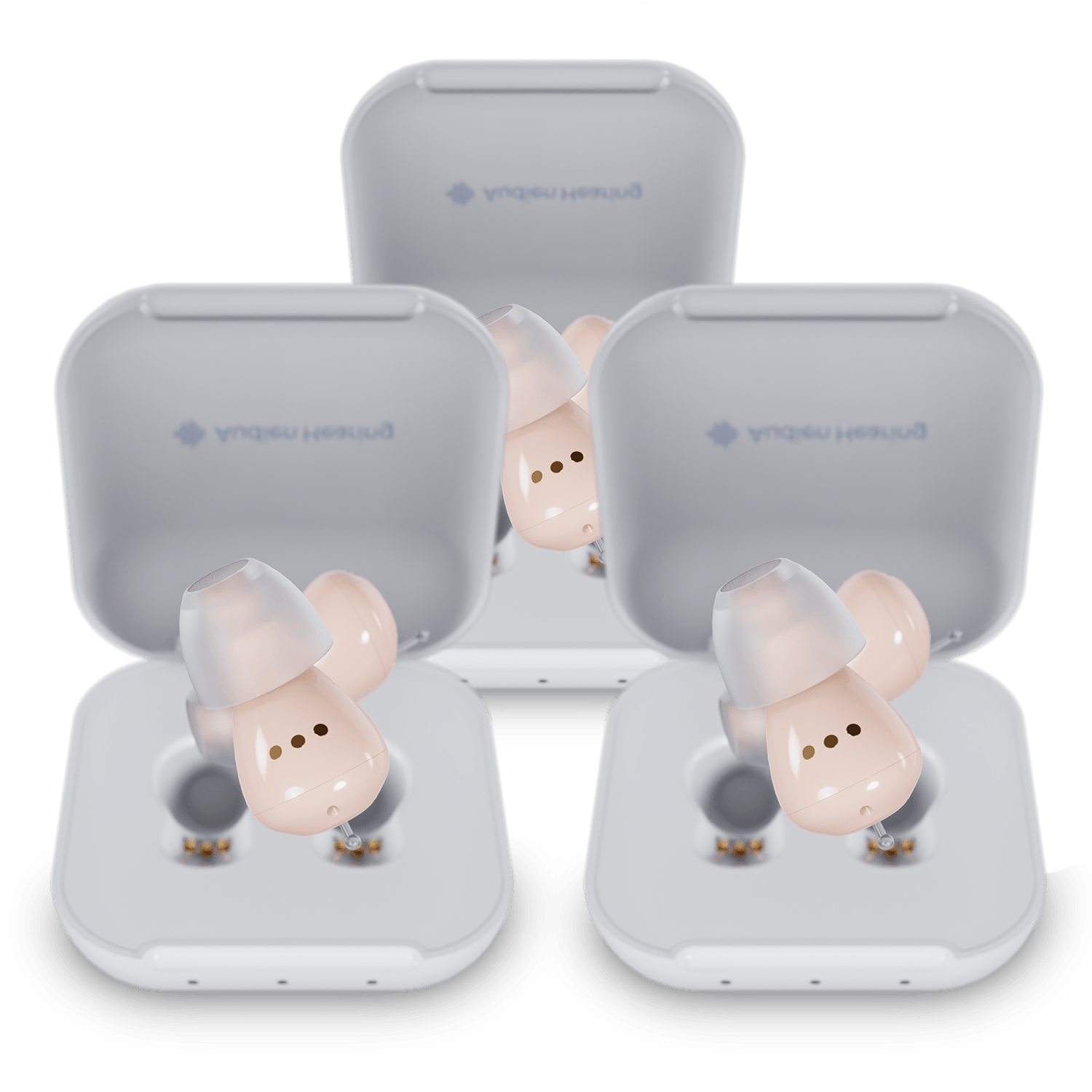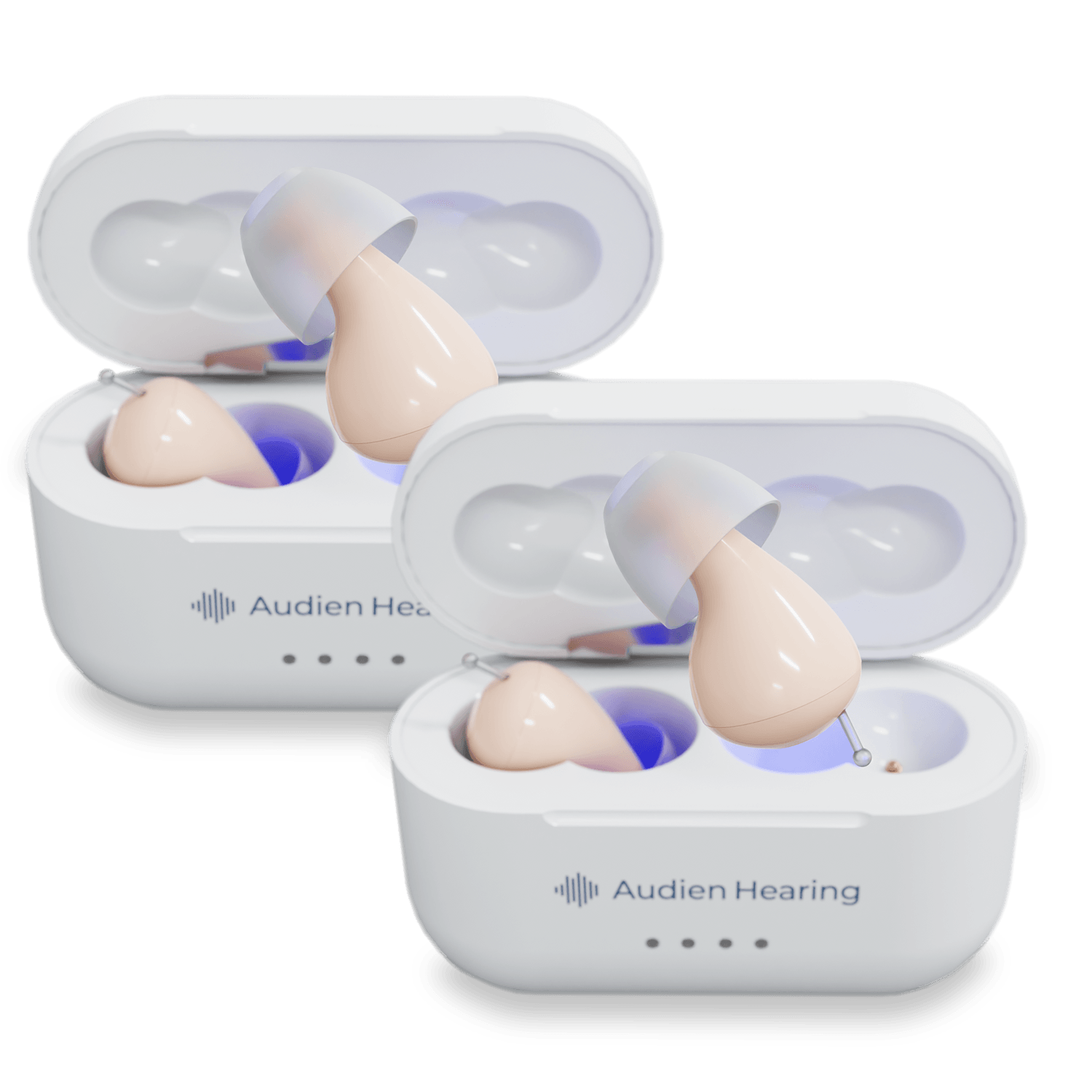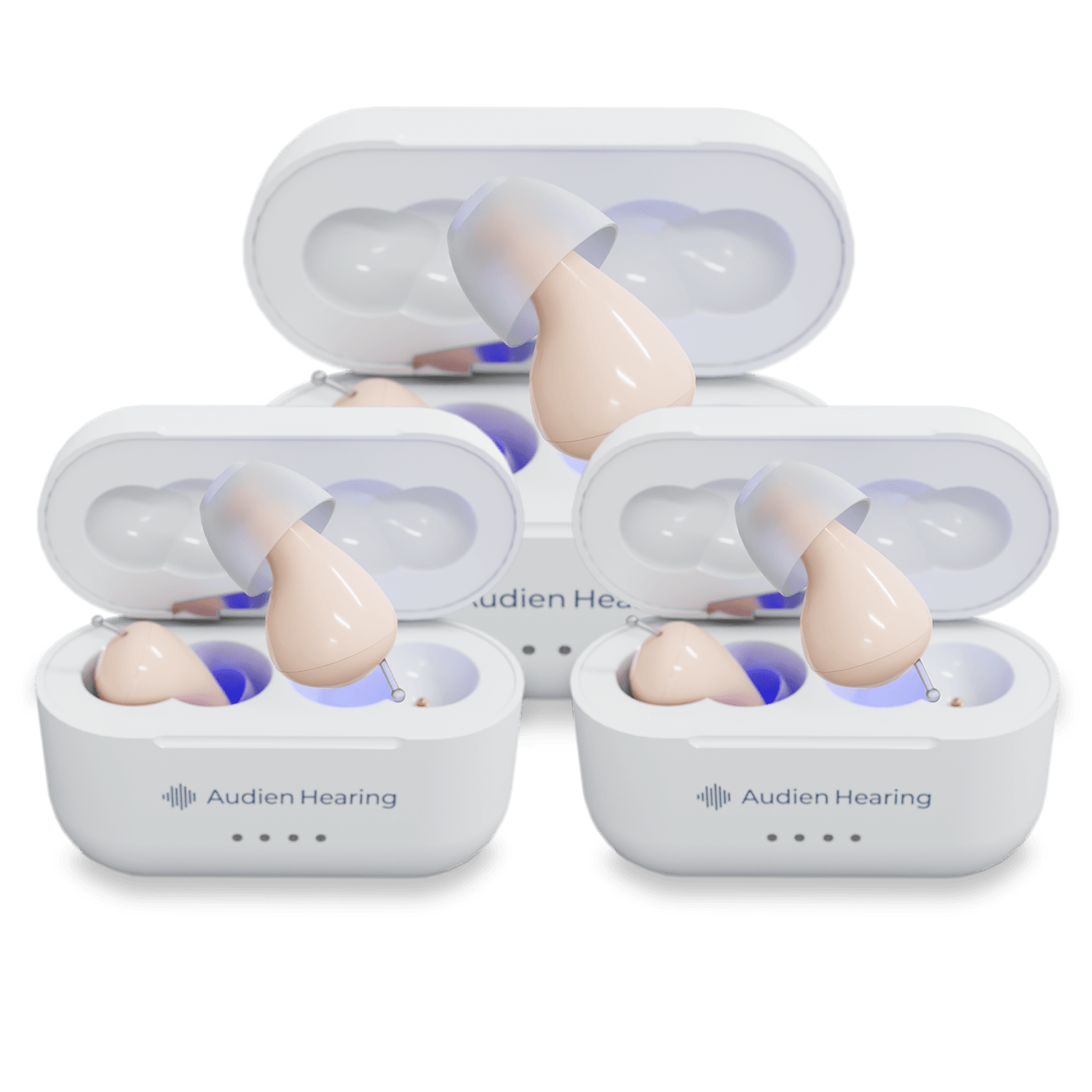If you're considering the Atom X hearing aids, you're probably wondering about that touchscreen.
Is it actually easy to use, or is it just another complicated gadget? As an audiologist who's seen countless patients struggle with tiny hearing aid buttons, I can tell you the touchscreen represents a fundamental shift in hearing aid control. Let me walk you through what makes it different and whether it's as simple as it promises to be.
The Daily Frustration Nobody Talks About

Imagine: You're trying to adjust your hearing aids. You feel for a button smaller the size of a grain of rice. Press once? Twice? Did anything happen? You have no idea. The beeps all sound the same. You're not even sure how many beeps you heard. After a few failed attempts, you give up and live with whatever setting you're stuck on or wait until a loved one can come help. Even then it can be hard.
This is the reality for millions of hearing aid users. They have sophisticated devices capable of multiple settings, but the controls are so frustrating that they never use them. It's like having a sports car but being afraid to shift out of first gear.
What Makes the Atom X Touchscreen Different
 The Atom X takes a completely different approach. Instead of putting tiny controls on the hearing aid itself, they've built a touchscreen right into the charging case. When you open the case, you're greeted with a clear, large-visual display showing exactly what you need to know.
The Atom X takes a completely different approach. Instead of putting tiny controls on the hearing aid itself, they've built a touchscreen right into the charging case. When you open the case, you're greeted with a clear, large-visual display showing exactly what you need to know.
Looking at the actual interface, you see:
-
Volume bars showing the exact level for each ear (displayed as percentages like 80%)
-
Large plus and minus buttons that are impossible to miss
-
Clear mode icons for Comfort, Conversation, Crowd, and TV
-
Visual feedback that highlights your current selection in blue
The screen is about the size of a large pill bottle label—big enough to see clearly without squinting, small enough to keep the case portable.
The Reality of Touchscreen Responsiveness

Here's what impressed me most: the touch targets are genuinely large. Those plus and minus buttons for volume? They're bigger than your fingertip. The mode selection buttons are clearly spaced with obvious icons. You can see in the interface that when "Conversation" mode is selected, it lights up in blue while the others remain gray. No guessing, no confusion. And makes it even easier if someone else is helping you with the controls.
The touchscreen doesn't require the light, precise touch of a smartphone. It's built to respond to deliberate touches, even if your fingers aren't as steady as they used to be. You press, it responds, you see the change immediately.
No Smartphone Required (Really)
One of the biggest advantages is complete independence from smartphones. Everything happens on that case screen:
-
No app downloads
-
No Bluetooth pairing frustrations (OPTIONAL bluetooth feature)
-
No dead phone battery leaving you stranded
-
No software updates to figure out
-
No tech-savvy grandchild needed
The case IS your control center. Period.
Comfort Mode
Comfort Mode is a gentler listening setting with slightly reduced amplification compared to other modes. It’s designed to help you ease into wearing hearing aids—especially if you’re new to amplified sound or adjusting to a new device. Sounds may feel softer and more subtle in this mode, which can make it easier for your brain to adapt without feeling overwhelmed. Many users begin in Comfort Mode and later switch to Conversation Mode for more clarity and volume once they’ve adjusted. Others prefer to stay in Comfort Mode long-term for a more subtle and relaxed sound experience.
Comfort Mode is a great choice if:
-
You’re wearing hearing aids for the first time
-
You’re sensitive to loud sounds or get overstimulated easily
-
You’ve just upgraded to a new device and need a gradual transition
Real-World Use: How It Actually Works

Let's walk through real scenarios using the actual interface:
Morning routine: You open the case and immediately see both hearing aids at 80% volume. The display is black with white text—high contrast and easy to read even without glasses.
Restaurant adjustment: Background noise overwhelming? Open the case, tap the "Crowd" icon (showing multiple people), and watch it turn blue. Your hearing aids are now optimized for noisy environments. Close the case, done.
TV time: One tap on the TV icon switches modes. No memorizing beep sequences. The TV icon lights up blue, confirming your selection.
Volume changes: Need it louder? Press the plus button and watch the green bar grow. Too loud? Hit minus. The percentage shows exactly where you are—no more "is this maximum or medium?"
The Learning Curve (Or Lack Thereof)
If you've ever used an elevator button, you can use this touchscreen. Seriously. It's that straightforward. The icons make sense—an ear for conversation, multiple people for crowds, a TV for television. The plus makes things louder, minus makes them quieter.
There's no manual to study because everything is self-explanatory. The visual feedback means you never wonder "did that work?" You see it work.
Who Benefits Most from the Touchscreen Design

While everyone can use it, certain users find it life-changing:
Those with arthritis or tremors: Large touch areas don't require precision
People who've given up on adjustments: Visual confirmation brings back confidence
Anyone who hates reading manuals: It's genuinely intuitive
Those with mild vision issues: High contrast display with large elements
Independent seniors: No family tech support needed
Overstimulated by sound: Those who want a softer listening experience to ease into the process or longterm
Addressing Common Concerns
"What if I accidentally change settings?" The case has to be open to make changes. When closed, nothing can be accidentally adjusted.
"Is the screen fragile?" It's protected when closed and built for daily use, not delicate handling.
"Does the screen make the case too big?" The case is larger than basic models but still fits easily in a pocket or purse. It's a worthwhile trade-off for actual control over your hearing.
The Game-Changing Difference

Here's what the Atom X touchscreen really changes: it transforms hearing aid adjustments from a frustrating mystery into a simple task. You go from hoping you pressed the right tiny button the right number of times to seeing exactly what you're doing.
Imagine the confidence of knowing you can adapt to any environment. Is the restaurant too loud? Twenty seconds to fix it. Can't hear the TV dialogue? One tap. Need to fine-tune volume? Press plus or minus while watching the percentage change.
Making the Decision

Is the Atom X touchscreen actually easy to use? After seeing the interface and understanding how it works, the answer is an emphatic yes. It's not just easy—it's the easiest hearing aid control system available.
The CaseControl™ technology solves decades-old problems:
-
You see every adjustment
-
Icons make sense instantly
-
Touch targets are genuinely large
-
No phone or app needed
-
Visual confirmation eliminates doubt
If you've avoided hearing aids because they seem too complicated, or if you've struggled with current hearing aids because the controls frustrate you, the Atom X touchscreen could change everything.
With the 45-day trial period, you can experience it yourself. Use it in real situations—restaurants, watching TV, quiet conversations. See if having actual control over your hearing aids makes the difference you've been hoping for.
Because the question isn't whether you're tech-savvy enough for modern hearing aids. The question is whether hearing aids are finally user-friendly enough for real people. With the Atom X touchscreen, they finally are.
